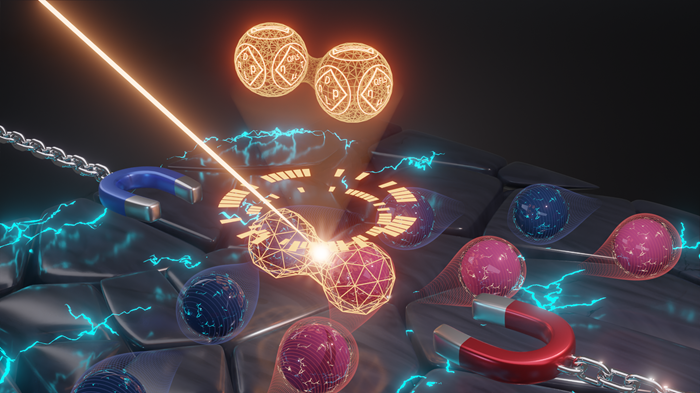A novel technique for the thorough characterization of semiconductors in a single measurement has been developed by an HZB physicist.

The bright spheres symbolize bound charge carriers (negative and positive) in the material. The light beam separates these charges, which are then deflected in different ways in the applied magnetic field. With the CLIMAT method, around 14 different parameters of the transport properties in semiconductors can be measured with a single measurement, for example, density, lifetime, diffusion lengths, and mobility. Image Credit: Laura Canil
Based on the Hall effect, the “Constant Light-Induced Magneto-Transport (CLIMAT)” records 14 distinct parameters related to the transport characteristics of both positive and negative charge carriers. The approach, which has now been tested on twelve distinct semiconductor materials, will save a significant amount of time when evaluating novel materials for optoelectronic uses like solar cells.
One characteristic unites all semiconductor-based devices, including solar cells, transistors, detectors, sensors, and LEDs: their charge carriers are only liberated upon contact with light (photons). Negative charge carriers, or electrons, are thrown out of their orbits by the photons and travel through the material until, eventually, they are caught once more.
Concurrently, holes are formed in the electron-deficient regions; these holes function as positively charged charge carriers and are crucial for the operation of the corresponding application.
The mobility, diffusion lengths, and lifetimes of positive and negative charge carriers in semiconductors frequently vary by orders of magnitude. Up until now, distinct measurement techniques have been needed to ascertain the parameters of the transport properties for every kind of charge.
Single Measurement
HZB physicist Dr. Artem Musiienko has now created a new technique that can record all 14 parameters of positive and negative charge carriers in a single measurement as part of his “Maria Skłodowska Curie Postdoctoral Fellowship.” A continuous light source and a magnetic field applied vertically through the sample are used in the “Constant Light-Induced Magneto-Transport (CLIMAT)” to separate charges.
Based on their mass, mobility, and other characteristics, the charge carriers move along an electric field. They are deflected by the magnetic field perpendicular to their direction of movement (Hall effect). With the help of a simple system of equations, Musiienko demonstrated that a total of fourteen distinct properties could be ascertained from the signals, particularly the variations in the signals of the various charge carriers.
p and n Charge Carriers
CLIMAT thus provides a comprehensive insight into the complicated mechanisms of charge transport, both positive and negative charge carriers, with a single measurement. This enables us to evaluate new types of semiconductor materials much more quickly, for example for their suitability as solar cells or for other applications.
Dr. Artem Musiienko, Physicist, Helmholtz-Zentrum Berlin für Materialien und Energie
Testing Different Semiconductor Materials
To showcase the extensive range of applications of the recently developed technique, scientists from HZB, the University of Potsdam, as well as other establishments in the USA, Switzerland, the UK, and Ukraine, have employed it to examine twelve distinct semiconductor materials. These materials comprise silicon, halide perovskite films, organic semiconductors like Y6, semi-insulators, self-assembled monolayers, and nanoparticles. Nature Communications has now published the findings.
Outlook: A Very Compact Instrument
The CLIMAT method received a score of 15 out of 16 points in Nature Electronics from independent experts, including Prof. Vitaly Podzorov from Rutgers University in the USA, who believes the new approach is revolutionary. CLIMAT, in particular, saves a significant amount of time by doing away with many of the steps that were previously necessary for various measurements. The European Patent Office granted the CLIMAT method a patent in early 2024, with the number.
Negotiations are currently underway with companies about licensing our method.
Dr. Artem Musiienko, Physicist, Helmholtz-Zentrum Berlin für Materialien und Energie
The goal is to create a compact measuring device, about the size of a notebook.
Journal Reference
Musiienko, A., et al. (2024) Resolving electron and hole transport properties in semiconductor materials by constant light-induced magneto transport. Nature Communications. doi.org/10.1038/s41467-023-44418-1.